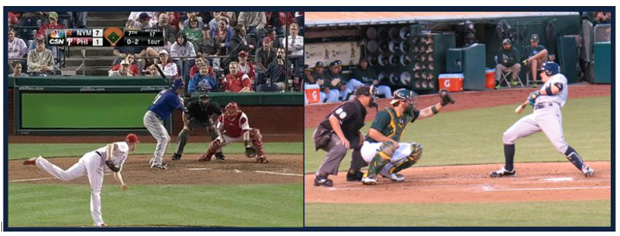| Purpose Pitch vs. Waste Pitch |
| By: Bob McCreary
Provided by: Baseball By The Yard
But was it? I believe there is quite a difference between a purpose pitch and a waste pitch. In my view, a purpose pitch is a pitch that isn't necessarily a strike but still serves a purpose. A waste pitch is a pitch thrown for a ball that served no purpose at all. Here are two examples of a situation and how a waste pitch and purpose pitch differ. 1. The count is 0-2. The catcher calls for a high fastball. The pitcher throws it a foot outside and high. Because the pitch was a ball right out of the pitcher's hand, the batter immediately knew to take the pitch. This is an example of a waste pitch because nothing was really accomplished. The pitcher just added another pitch to his pitch total and nothing more. 2. The count is 0-2. The catcher calls for the same fastball up in the zone but this time on the inner half of the plate. The pitcher throws it there. This caused the batter to wait a little longer because a pitch that starts in that location could be a curve ball that could still break over the plate. When it doesn't, the batter now moves his eyes/head back and away from the pitch. This accomplished a few things. First, the pitch was close enough to the strike zone to entice the batter to think of swinging at it with two strikes. Even if he did, the batter would not have been able to do much with that pitch based on its location. Second, the pitch moved the batter's eyes/head. When this occurs, a tiny bit of fear enters into the hitter's mind. He instinctively will not be so willing to lean over the plate because the next pitch might be in the same location. If the next pitch is a curve-ball that starts towards the same location, the batter is more likely to think it is another fastball up and in and therefore bail out. As a result, when the curve ball breaks over the plate, the batter often locks up. The 0-2 pitch set the batter's eyes upward and the following pitch went down and away thus changing the batter's eye level.
There are many other examples of this difference between waste pitches and purpose pitches. The general idea is that a purpose pitch sets up the following pitch. The waste pitch doesn't really accomplish anything. Some pitchers are so afraid of allowing a batter to get a hit on an 0-2 count that they over-correct the next pitch and totally waste one. Good pitchers throw the 0-2/1-2 pitch with a purpose which usually makes the next pitch much more effective. |







